Pink is for Girls, Blue is for Boys?
Before having Claire I couldn’t understand why some mothers — even the die-hard feminists who eschewed all traditional takes on gender roles — would dress their baby girls in pink, frilly clothes all the time.
And as soon as Claire was born, I discovered why.
It’s because whenever she’s not wearing pink she’s often mistaken for being a boy.
And I’m sure that this is the exact reason most parents dress their baby boys in predominantly blue wardrobes as well.
I have personally never questioned these color associations with gender before. I always assumed that they are what society once deemed appropriate, and so I — along with billions of others — automatically grew up thinking this way.
What’s strange about this assumption is just how new the concept of “pink is for girls, blue is for boys” is. In fact, a 1918 issue of Ladies’ Home Journal stated:
The generally accepted rule is pink for the boys, and blue for the girls. The reason is that pink, being a more decided and stronger color, is more suitable for the boy, while blue, which is more delicate and dainty, is prettier for the girl.
Huh. Who woulda thunk?
Smithsonian Magazine discusses the evolution of color gender associations in further detail in an article featuring University of Maryland clothing historian Jo B. Paoletti, whose new book “Pink and Blue: Telling the Girls From the Boys in America” is due out later this year.
The article starts with a photo of former U.S. President Franklin Delano Roosevelt at age 2½ (see left). At the time the picture was taken — 1884 — social convention dictated that boys wore dresses until age 6 or 7, also the time of their first haircut. FDR’s outfit was considered gender-neutral.
So what exactly happened between then and now to promote certain styles and colors to be gender-specific? There are various reasons, including manufacturer and retailer interpretations and the rise of the feminist movement that continued the rise and fall of this phenomenon.
And as technology advanced (ie, prenatal testing) and consumerism rose, the demand for “boy” and “girl” merchandise also went up.
The article is a fascinating read and I recommend anyone interested in sociology and/or gender studies to take a look.
I personally think it’s hilarious that the entire “pink is for girls, blue is for boys” idea could have gone either way. And it almost seems funny to think that pink was once considered a “more decided and stronger color.” But then again, that’s just 30+ years of society’s influence on me talking.
I can’t help but wonder if the trend will go the opposite way in the near future. Who knows? Maybe my grandchildren will consider pink a more masculine color than blue. And perhaps dressing all young children in dresses — which seems to be a more economical idea when you consider that dresses take longer to grow out of — will once again come into fashion.
And perhaps one day, my father won’t be embarrassed to buy a cute onesie like this for Claire:
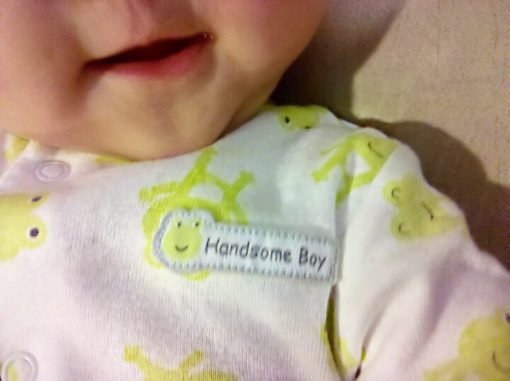
This is what happens when a grandparent who doesn’t speak much English buys clothes for your daughter.
And yes, we dress her in it because we personally think it’s hilarious.
Via Boing Boing.
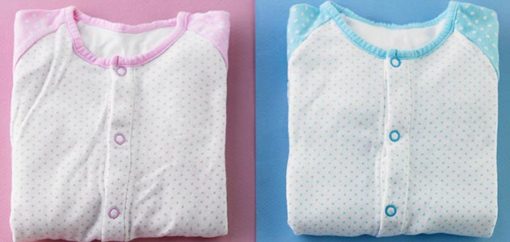
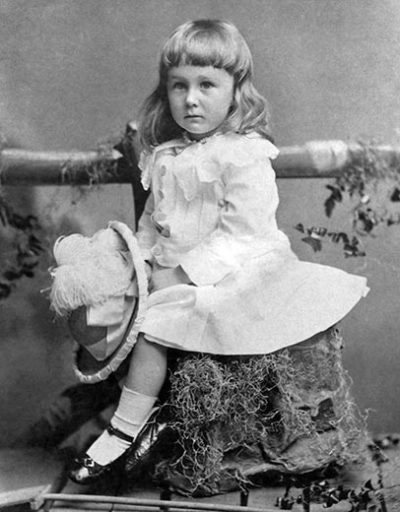

![A Semi-Lazy Post [An Update in Pictures] 295074_840307983955_108813324_n](https://www.geekinheels.com/wp-content/uploads/2012/06/295074_840307983955_108813324_n-130x130.jpeg)

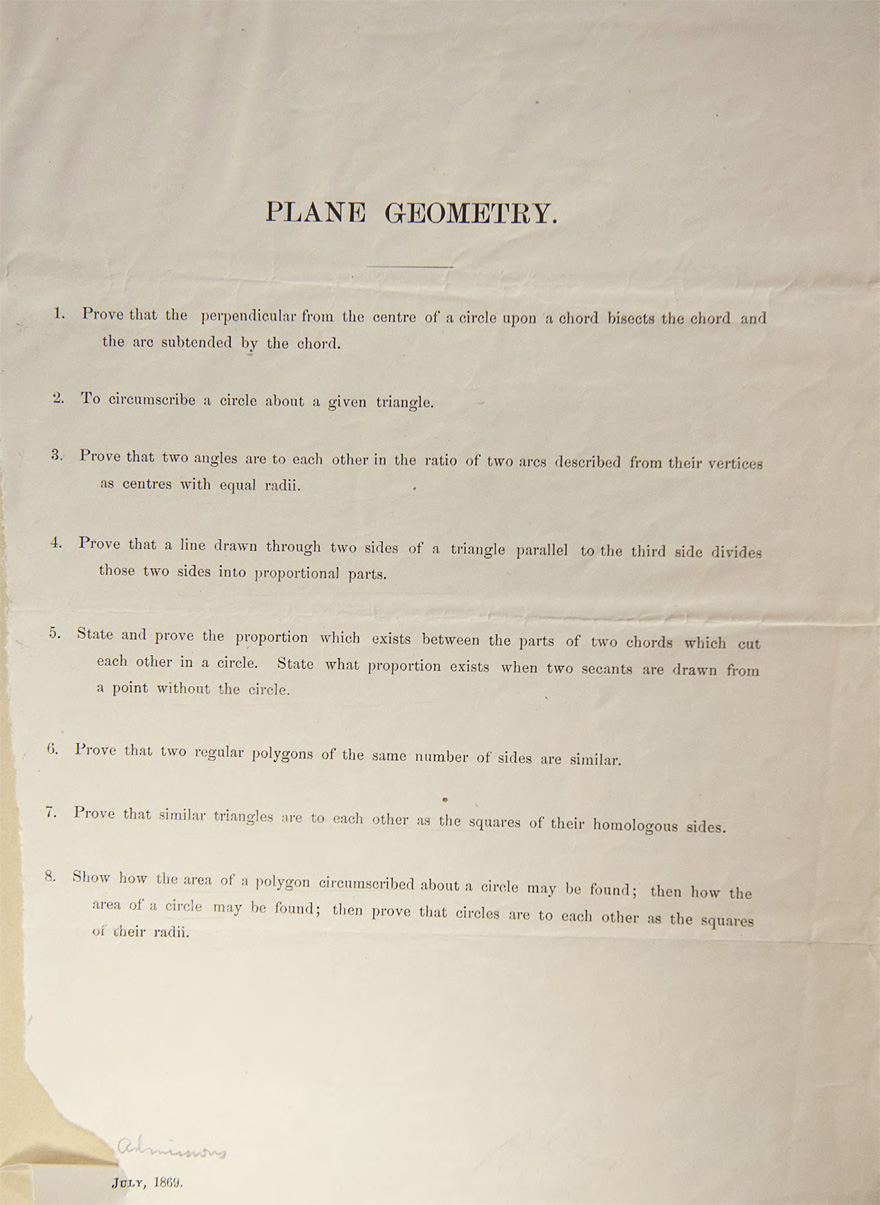
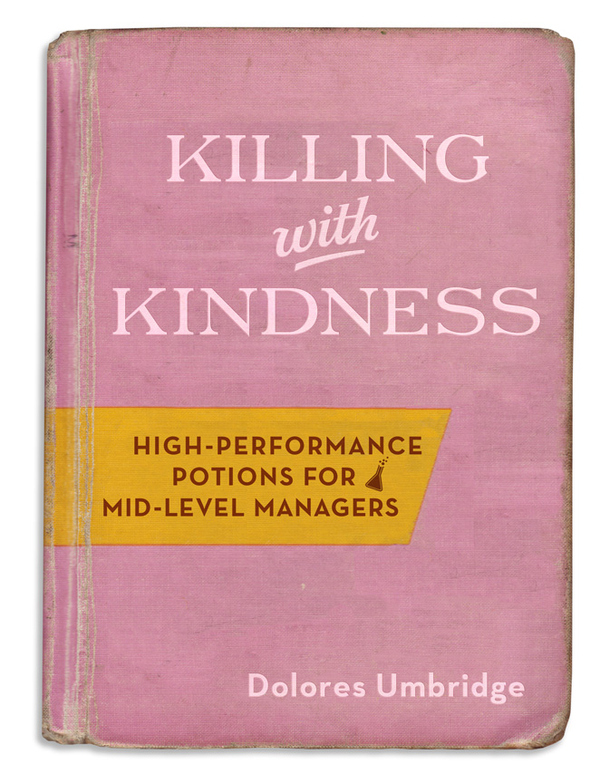
Jessica
I love it – so interesting! And Julia, despite her usual ensconcement in pink, is STILL mistaken for a boy. Another interesting read is Pink Brain Blue Brain by Lise Eliot. It addresses gender development in children, and while it’s not a light read like the Smithsonian article, it’s so interesting how culture and upbringing ends up creating these measurable differences in girls’ and boys’ abilities. I read it before I even got pregnant and was fascinated.
Di
Totally gonna have to check out that book.
Lida
Interesting! I remember in the Little House books, Laura had pink hair ribbons for her brown hair, and was so jealous of her blond sister’s blue ribbons. Have you seen the latest controversy re: J.Crew’s ad with the little boy in pink toenail polish?
Lida
Heh, I realize the two girls in Little House have nothing to do with gender roles and color. That’s just what this post reminded me of 🙂
Red Stethoscope
For what it’s worth, Claire can definitely pull off the “Handsome Boy” onesie with that cute smile!
Aubrey @ My Simple Everyday
Such a good post! Blue has always been my favorite color!
ruth
we have the same onesie, it was gifted to us by our english speaking cousins!
the funny thing is, my aunt who lives in korea sent our son a pink “pororo” blanket and pillow set. she said that in korea, pink isn’t only for girls! i felt hesitant to use the pink blankets for a boy, but i figure we should give it a try. I also hear stories from coworkers whose sons favorite color is pink =D
Christine
Wow!! That’s really interesting! My son is ALWAYS mistaken for a girl even when he’s wearing blue. As for wearing the little froggie onesie that says Handsome Boy… you could use scissors and just snip the thread so that tag comes off. It wouldn’t bother me, personally, since I have a burpcloth (that I only use at home) that says, “Thank Heaven for Little Girls”. I bought a bag of burp clothes at a consignment store and that one was in there.
Di
A girl I know from high school was told she was having a boy, but the baby ended up being the girl. She went out and bought an entire new wardrobe and put away all the “boy” clothes. It totally baffled me that she was willing to spend that much money just to make sure her kid was in pink and ruffles. I just don’t get why people care SO much what their kid wears.
K
Dude – I could almost go with the dress, but FDR’s shoes are not gender neutral!
Charles
All shoes are sex neutral, because feet are not an anatomical difference—how shallow can you possibly be? I have never seen any shoes marketed to women, including bizarre looking, unsafe and unhealthy spike heels, that are any more flamboyant than the uniform shoes worn by the British Beefeater guards at the Tower of London. Their costume traces back most of 500 years to executioners in medieval England. Other frilly shoes on men today are the “tsaroukia” of the Greek guards in Athens, whose costume also includes a pleated skirt. Stop sex typing! Use natural markers of gender differentiation—facial hair on men vs none on women—differences of shoulder, chest and hip configuration, and differences of voice. That’s all anyone needs to tell the sexes apart. But of course, sex typing clothes and shoes has ceased, but only insofar as it was used to also prevent women from having choices. Therefore, we are only half civilized, because we still prohibit human variety and individuality to the male half of the world!
Tiffany
That is so interesting!! Check out this article about a JCrew ad with the mom putting pink nail polish on her son’s toes that is causing outrage. Much more interesting in light of the history of pink and boys!
http://www.chicagotribune.com/business/ct-talk-pink-toenails-0414-20110413,0,4227519.story
Scottie Ann Kelly
I just saw this too and thought of this particular blog. I am so baffled by this stupid controversy over a son playing with his mom!